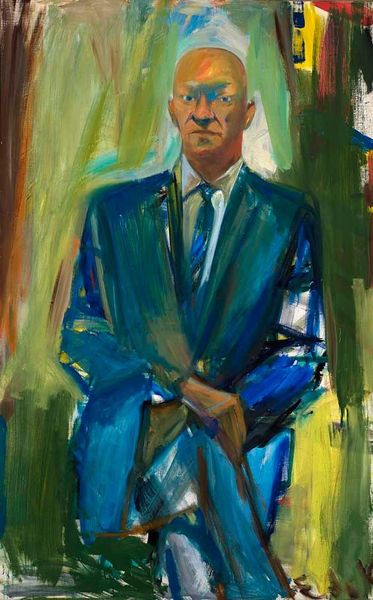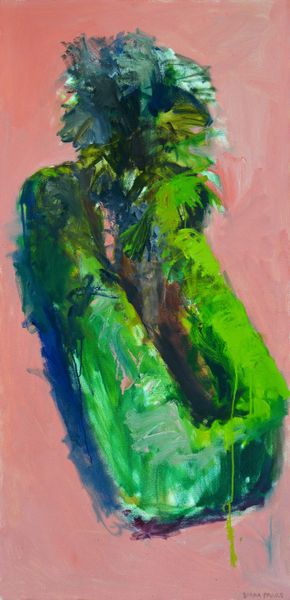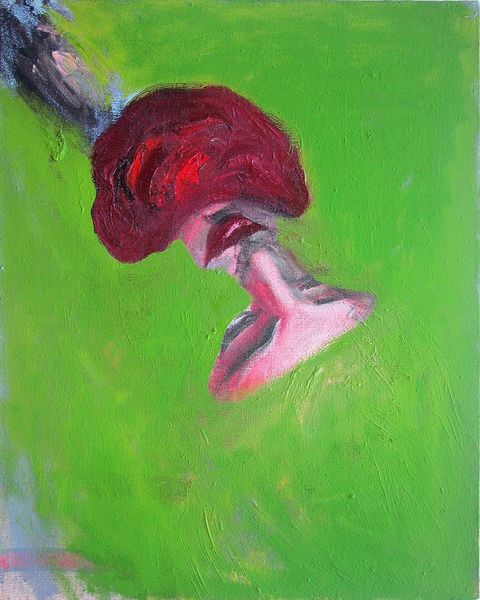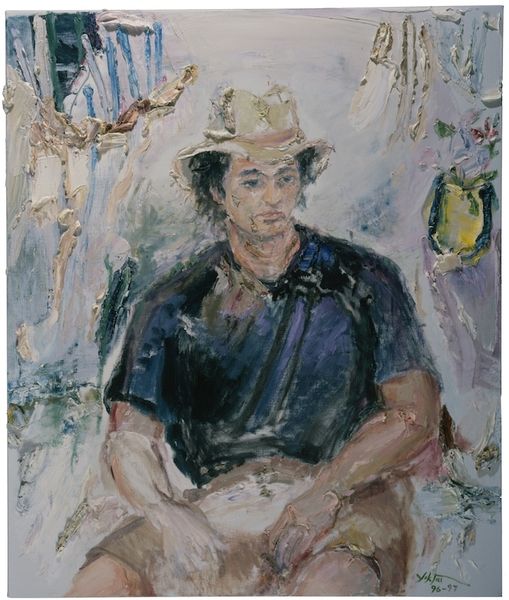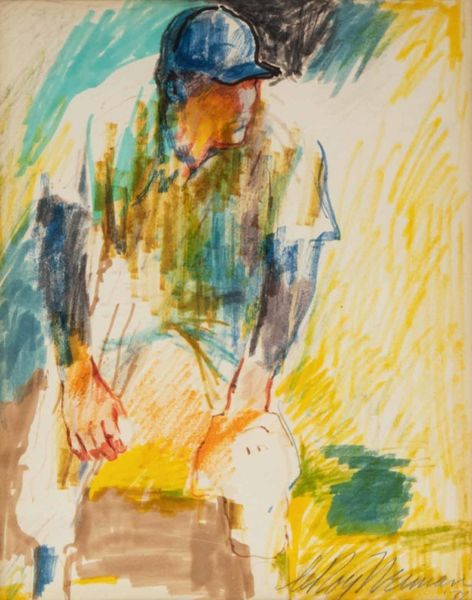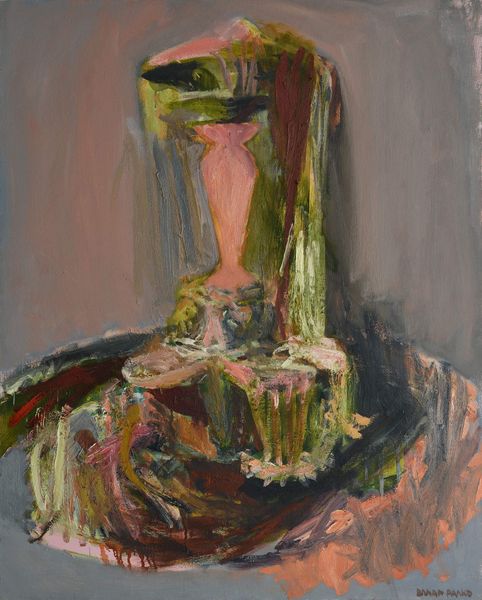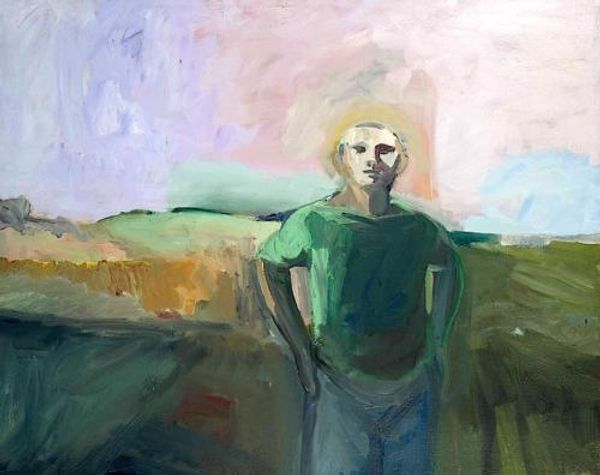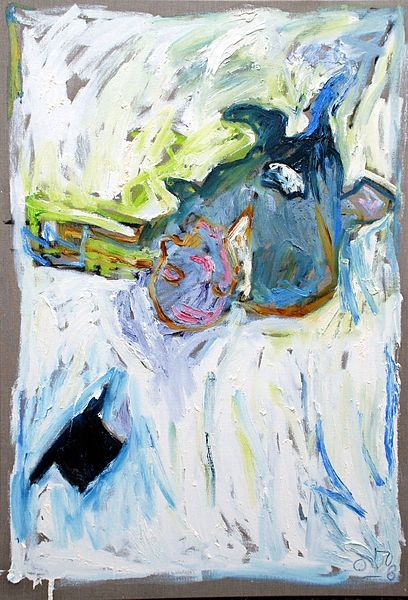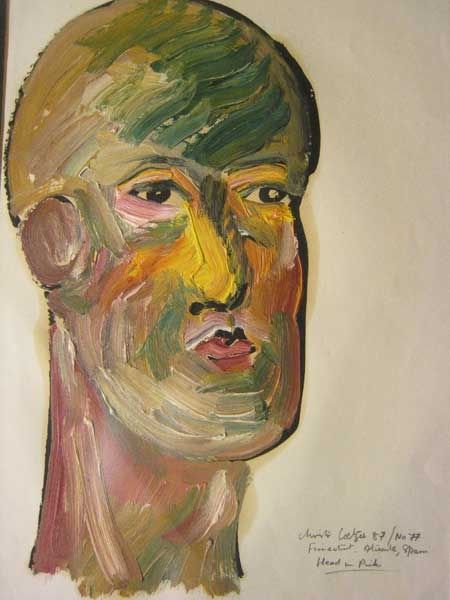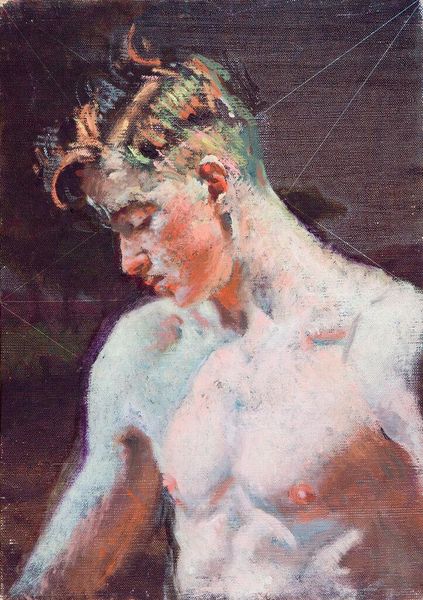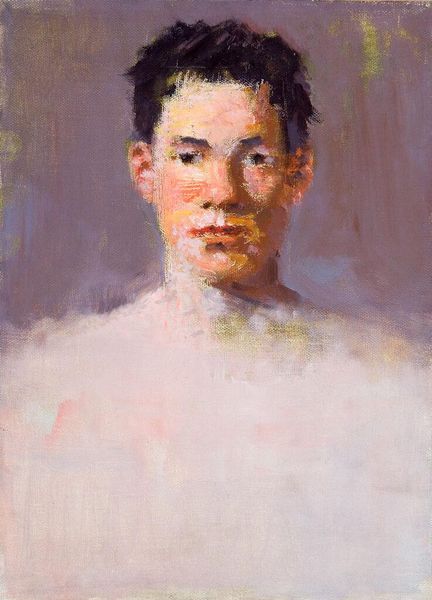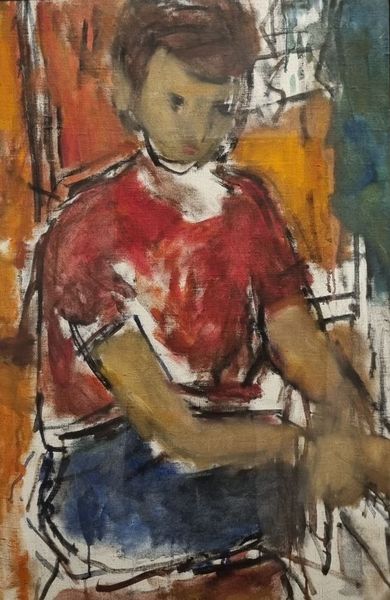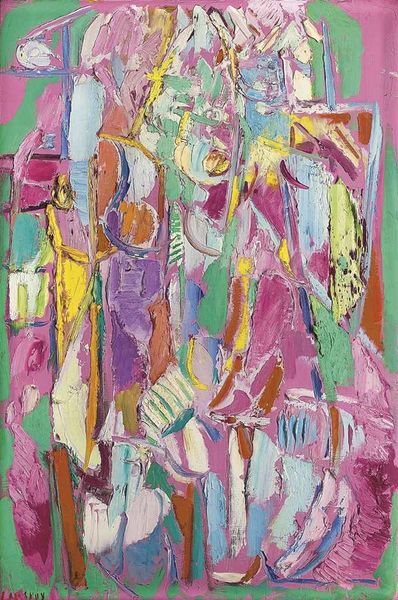
Copyright: Patrick Procktor,Fair Use
Editor: Here we have Patrick Procktor's oil painting, "HRH Prince Charles," created in 1987. The vibrant green immediately strikes me, it almost flattens the picture plane, while Prince Charles seems relaxed and at ease. What stands out to you about this portrait? Curator: Well, the seemingly effortless plein-air style belies a sophisticated manipulation of material and production. Think about the context: a portrait of a Royal, yet rendered with the immediate and somewhat casual handling of oil paint. This choice moves away from traditional, highly polished royal portraiture, subtly commenting on changing attitudes toward the monarchy in late 20th-century Britain. The very application of impasto challenges established hierarchies between art and craft, questioning the value traditionally assigned to “high” art materials. Editor: That's interesting! I hadn't considered the materials as a comment on social attitudes. Does the act of painting *en plein air* itself have some material significance? Curator: Absolutely. Painting *en plein air* democratizes the process, moving it outside of the formal studio and into the “real” world. The resulting brushstrokes, seemingly spontaneous, capture the Prince's connection to the land in a literal, material way. We could consider what this meant during the rise of Thatcherism, the shift towards a service economy, and what it meant for how people materially relate to work, land, and production. Editor: So, by using *plein air*, and choosing impasto application, Procktor makes a deliberate artistic statement? Curator: Precisely! Procktor’s artistic choices around materiality become intertwined with a wider commentary on the socio-economic context in Britain at that time. It is the "how" and the "what" which helps contextualise the social commentary inherent in the artistic production, a true feat! Editor: I've certainly never thought about royal portraits that way before. It gives me a completely different appreciation for the choices artists make.
Comments
No comments
Be the first to comment and join the conversation on the ultimate creative platform.

